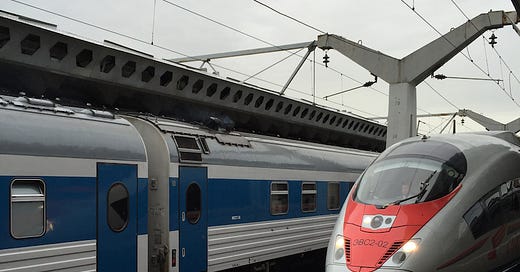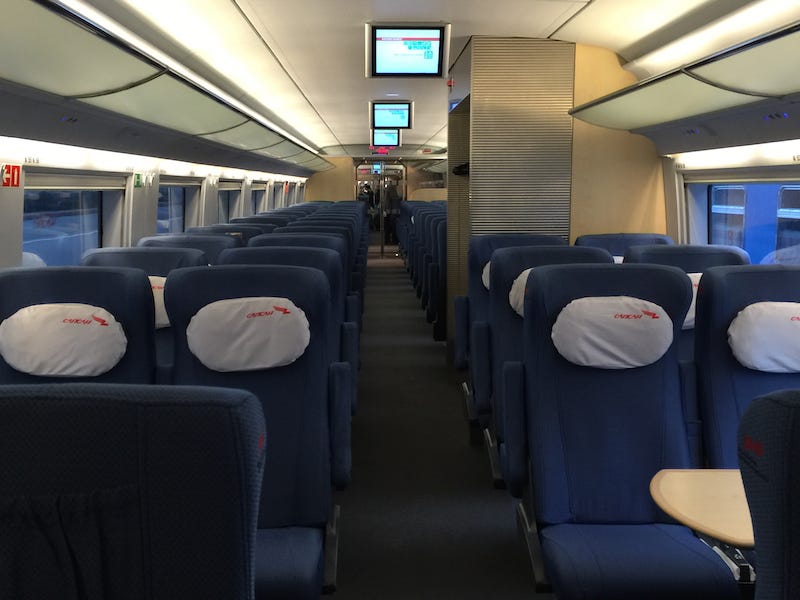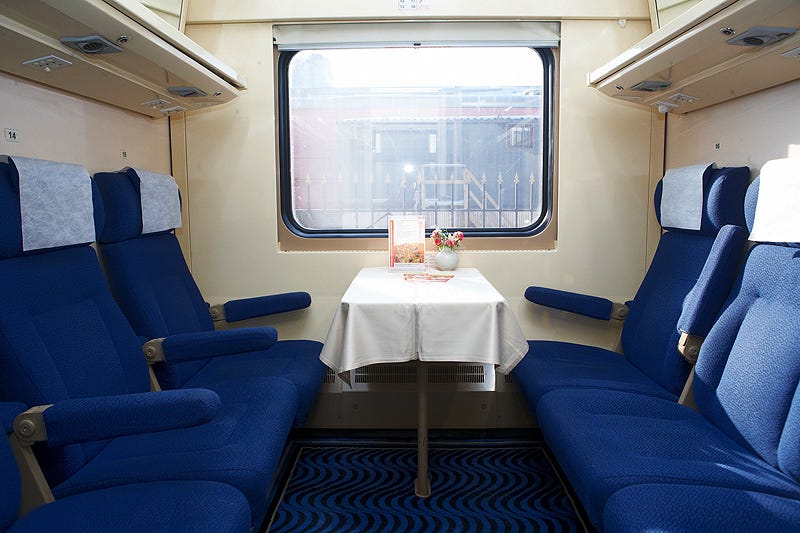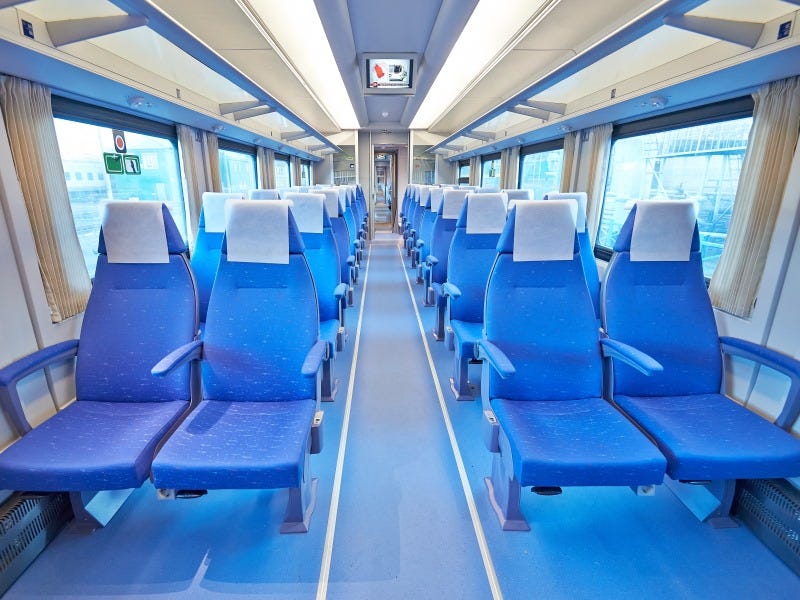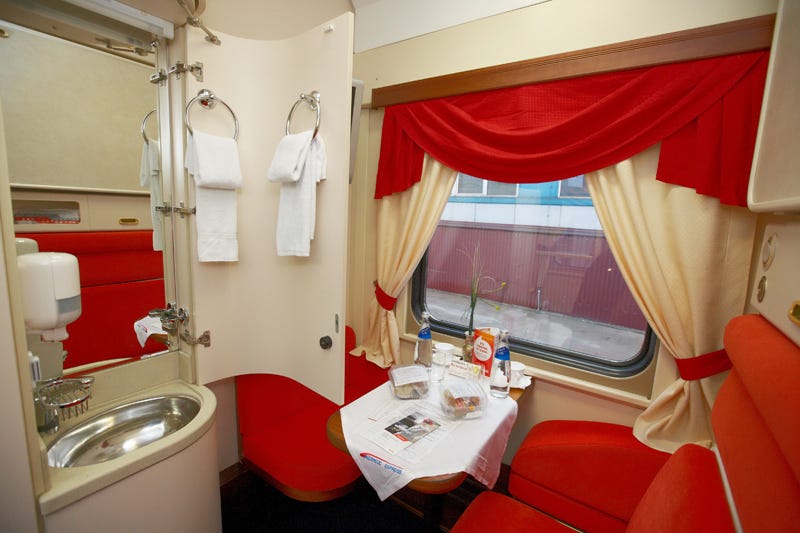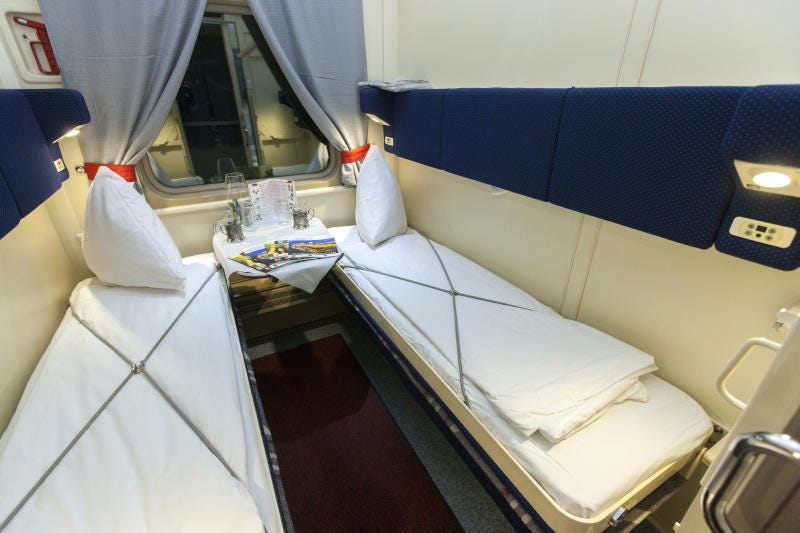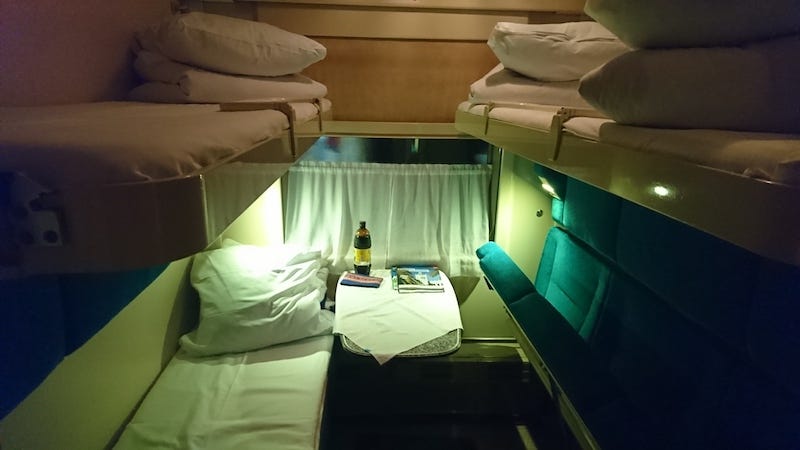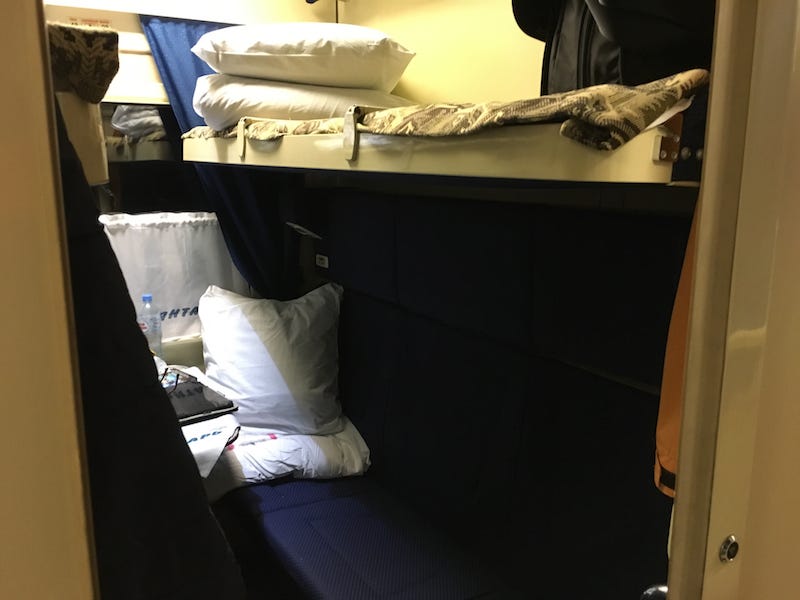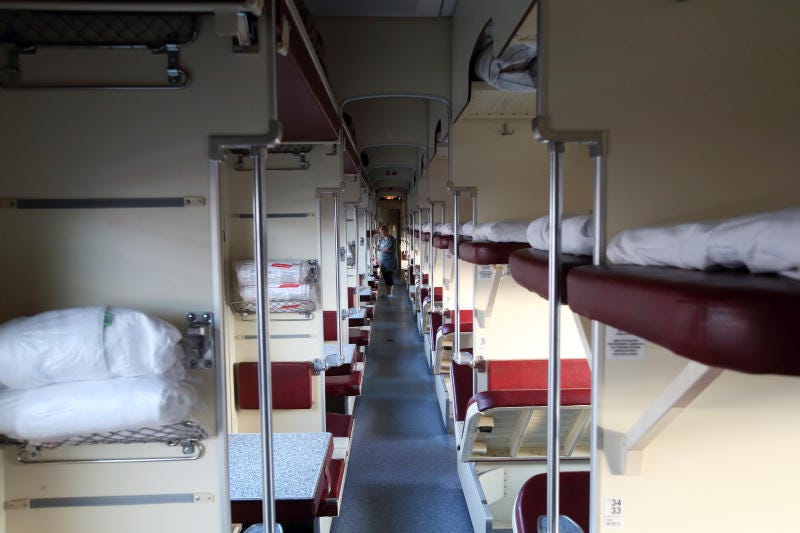Railroad Travel in Russia — Part Two
Practicalities of buying Russian railroad tickets and choosing train type/class
Buying Russian railroad tickets.
The primary website for buying rail tickets in Russia is the Russian Railroads (RZD) website. This link gets you to the search form where you pick your travel destination and dates. The website is Russian/English. You need to register on the RZD website to buy tickets. Payment is by plastic card of almost any type. Their system gives you train options with tickets available on the date of search for a chosen destination. If tickets or a specific type of ticket are not available at the time of search, do not give up, as ticket availability is dynamic.
You will need photo ID to buy a ticket (normally a passport). ID number, name, and type will be required for buying a ticket. Exactly the same ID will be required for boarding the train. If you do not have the ID you used to buy the ticket, you will not be allowed onto the train.
Tickets go on sale 90 days before train departure (45 and 60 days for some trains). Prices are dynamic, reflecting popularity, demand, and availability. This means buying in advance gives you more chances of cheaper tickets. All railroad tickets are now electronic (paper tickets are still available if you buy from a ticket office). If, for whatever reason, you need a paper ticket, you can print a standard paper ticket from the ticketing machine at any major rail station in larger cities. When you buy a ticket on the RZD website, they will email you an e-ticket in PDF format. Russian railroad tickets are in Russian/English.
You can buy a one-way or return ticket, and sometimes you get a discount on a two-way ticket.
Alternatively to electronic tickets, you can buy regular paper tickets from ticket offices at any of nine major rail stations in Moscow. The difference is that buying from a ticket office, you will have no options of choosing a specific seat on a train. There will be lines. There are many resellers online and offline. When buying from a reseller, you will pay commissions, and availability of tickets might be limited. Also, not every reseller provides seat choice and other Russian Railroad services. All tickets are returnable; you get a fraction of the price if returned on the day of travel. There was an idea of cheaper non-returnable tickets, but I am unsure if it is implemented yet.
Types of railroad tickets and service
When you get a list of train options available, each train has different types of cars and services included in a ticket price. There will be an indication of the number of seats of each type available in each car. If you click on a specific car on the list, you will get a car map with occupied and available seats (beds for sleepers).
By the level of service, there are two types of trains: “фирменный” (branded) or “не фирменный” (regular). “Фирменный” trains tend to have newer cars, better maintenance, and passenger service. “Фирменный” trains always have a brand name, which is written next to the train number on the online ticketing RZD website. They are also pricier. Regular trains can have older or newer cars in consist and good service. It depends on a number of factors, and I believe the most important one is where the train originates. Each RZD division that builds and maintains train consists have their own specifics.
Regardless of branded or regular, all rail Russian railroads cars come in four major types.
Seater cars.
The type of seater car depends on the destination and train that service the destination. Each seater has its own class system. Each seater train service is unique because they have train consists and car layouts built for specific routes and service. Each seater is worth a separate article. I will outline some of the most popular seater train services below.
Sapsan (on above picture), a “branded” train that runs between Moscow and St.Petersburg has tickets for seven classes. Sapsan trains are built by Siemens and provide excellent travel quality and comfort that comes with very good passenger service. Each of seven classes of Sapsan provides different accommodation or services included.
Nevsky Express (below picture) en route between Moscow and St.Petersburg had been in operation long before Sapsan. Nevsky Express is built by a Russian manufacturer and runs almost with the same speed as Sapsan. Nevsky Express cars have separate compartments for six passengers each. That is 3 seats in two rows facing each other. The compartments have glass doors, luggage shelves, a small table, and TV sets. Nevsky Express has only one class of service, and it comes with food included in a ticket price. All passengers get lunch delivered to their seat.
Moscow — Nizhniy Novgorod route is serviced by Sapsan and Strizh. Photo below shows 2nd class of Strizh train.
Strizh consists is a Talgo train, providing three classes of service. One class is a seater, and two classes are sleepers, completely different from regular RZD sleeper cars explained below.
Many destinations are served by Lastochka trains. Lastochka is built by Siemens and it’s a very comfortable, simpler type of seater that provides accommodation similar to airline economy seats (wider seats and more room for legs though).
Other seaters are Russian-built and provide airline-type seating arrangements, 3+3, 3+2, 1+2, or 2+2 seats in one row. Some seaters serve regional destinations like Tula or Kaluga and have only seaters in their consist. Some long-distance trains have 1-2 seater cars in their consist to serve regional passenger traffic.
Seater train options have less availability compared to sleeper cars as they serve fewer destinations. Sleeper cars come in 4 classes, explained below. International train services may have completely different accommodation and class systems. Also, there are a few deluxe trains operating on some routes by private companies, not RZD, and their class system can be different. Below, the class system is found on 99% of Russian long-distance trains.
All long-distance sleeping cars have small compartments called kupe (купе). Kupe or compartments come in 4 types, explained below.
Deluxe.
Modern cars that have fewer compartments for 1-2 passengers each with private toilet and shower. Available on very few trains, and they are very pricey.
stly seen on trains between Moscow and St.Petersburg and obviously targeted to business use or private use for passengers who can afford them. I understand this type of carriage comes with a multitude of services included in the ticket price. Suffice it to say, if you can afford this type of ticket — go for it. If you travel in DeLuxe type of carriage you can skip all below reading, because DeLuxe cars are different in every way from “mass” type of rail car accommodations.
1st class sleeper (Russian — “spalniy vagon” — “спальный вагон” or “СВ”).
Each first and second class car has small kupe, compartments with sliding doors. In 1st class, each compartment has two lower bunk beds. 2nd class cars have four bunk beds — two upper, two lower, and this is the main and the only principal difference between 1st and 2nd class.
Each bed in a kupe is sold separately on the RZD website. This means if you travel alone, you will have the company of a total stranger, or whoever buys a second bed in the same kupe with you. You can buy both beds on separate tickets to your name and occupy the whole compartment, but this is pricey as you have to pay for two full tickets. This is an option though, and this is the only way to get maximum privacy and safety. If you are lucky and no one buys the second bed, you will travel by yourself. You might get company of a passenger getting on the train at some of the stops, though.
Your kupe bed serves as a couch at daytime and for sleeping it turns into a bed. In older cars, bed linen is provided separately. For trains departing late at night, a kupe comes with a bed already made, so when you board the train, your bed is ready to sleep. In newer cars, the bed linen is stored inside the back of the couch. The back of the couch collapses and turns into a bed that has been pre-made already. You do not need a car attendant; just flip the back of the bed, and your bed is ready. Bed linen includes one or two pillows (depending on service), a mattress (slim), blankets, and a cover.
Other kupe amenities include: a mirror, a foldable table, a TV set (in some cars), individual reading lights, storage space for luggage, hooks and hangers for clothes, electric outlets (only in newer cars!). Normally, each passenger is provided with a small cloth towel. There are individual smaller shelves for keeping small personal items for each bed. Windows have shades. There can be other service options and amenities. I will discuss them later in part three.
A bit more about 1st class cars. First class is not available on every train, and where it is available, it’s usually only one car, perhaps two on some trains. This means first-class tickets will sell quicker, despite they are priced more than double compared to 2nd class.
Since 1st class cars have less passengers, it’s more quiet. 1st class passengers get more attention from attendants and better overall service. There will be less morning lines to the toilet in the 1st class carriage.
Although Russian Railroads are making a big effort in rebuilding or replacing old Soviet rail cars, a big bunch of older cars is still in operation. This means even if you buy a first-class ticket, you might travel in an older car.
Each 1st class ticket comes with different options and additional services, and we will discuss them later in part three. Again, the main difference between 1st and 2nd class is the number of passengers in one compartment — kupe.
2nd class sleeper (Russian — “kupe”).
In Russian, second class is just called “kupe (купе)”. Technically it is the same type of accommodation as 1st class, with only one difference — kupe, or compartment, has 4 bunk beds. Two upper beds and two lower beds. Again, similar to 1st class, all 4 beds are sold separately, and when traveling alone you get company of three strangers. It is good to travel with family or company; you can buy all 4 beds and have maximum privacy.
Second-class sleepers have the same bed system as first class. Bed linen is either stored in a collapsible back of a couch-type seat, or a bed is provided separately.
Second class has absolutely the same amenities as 1st class, including a mirror, foldable table, TV set (in some cars), individual reading light, storage space for luggage, hooks and hangers for clothes, electric outlets (only in newer cars!). Normally, each passenger is provided with a small cloth towel. There are individual, smaller shelves for keeping personal items for each bed. Windows have shades.
Since 2nd class has upper beds, there is a foldable ladder to help passengers get to their upper bed.
If you are traveling for more than one night, normally lower beds (turned into a couch with bed linen removed) and a table by the window are shared with upper berth passengers during daytime.
Tickets for upper beds are cheaper, but because of inconvenience to some passengers getting to/from the upper bed, lower beds are sold much quicker. When you get a list of available beds on the RZD website, there will be a clear indication which bed is upper and which is lower. Upper beds have their individual reading light and a smaller shelf for keeping personal items.
Most 2nd class kupes are mixed sex. On some trains, there are female-only kupé. This is indicated on the list of available beds on the RZD website when you search for tickets. Male passengers cannot buy a ticket to a female kupe.
Each train would have 1-3 2nd class cars, and they are less popular as they are pricier. This means on a busy destination, 2nd class tickets are sold quicker.
Trick for making your overnight train travel more comfortable.
When choosing kupe, aim at those located in the middle of the car. Soundproofing is not that good in Russian rail cars. Kupe close to the sides of the car get lots of noise from wheels, car coupling mechanisms that make loud banging noise, doors opening and closing all the time, people getting on and off the train at stops, talking at the platform, toilets that make loud noise when flushed. This applies to all four classes on sleeper cars.
3rd class sleeper (Russian — platskart).
Same thing as 2nd class, except that compartments have no doors. This is a communal type of sleeper, cheapest and for that reason most demanded. Compartments are open, and you get company of 50+ passengers for the entire trip.
In addition to open compartments with four bunk beds, there are two bunk beds on the side of the corridor. Lower side bunk beds fold and turn into two seats and a table for the daytime, so both passengers (from upper and lower beds) can sit during daytime.
Beds in 3rd class are shorter compared to 1st and 2nd class. This means if you are tall, your feet will hang in the corridor when you’re sleeping. 3rd class has less luggage storage space and 3rd class passengers get less of additional services and amenities. There will be no TV, no mirror (except in the toilet), and in most cases, no extra amenities like toiletry kits. I understand 3rd class never comes with food included in the ticket price.
In this type of car, you get no privacy at all. It is noisy, smells with body odor, bad breath of drunk people, food people eat.
Generally speaking, 3rd class is not recommended, unless you are on a very tight budget or, for whatever reason, you want to be around Russians, socializing with them. Socializing is an inevitable part of Russian rail travel, and we will talk about this in further articles.
3rd class is convenient in the absence of seater service on the chosen destination, when you travel long distance during daytime and do not need to sleep on a train. This gets you a very cheap and comfortable seat. Pick a lower side bed (боковое место or боковушка), it will be a wide chair during the day with a table, at the window.
Good thing is that almost all third-class sleepers were renewed in the past years, so chances of getting an old car is much less (almost none) compared to 1st and 2nd class. 3rd class has less luggage storage space, and 3rd class passengers get less of additional services and amenities. That will be discussed in the next article.
Finalizing ticket purchase.
Choose travel dates, destination. Check available train options and car options. Select your preferred seat or bed. Finalize purchase by entering each passenger's data. Pay for the ticket using a plastic card. Once the ticket is purchased, you receive a confirmation email with an e-ticket in PDF format. You can always access your tickets through the RZD website by logging into your account.
Rail tickets are returnable, and you get a full refund if you return them before the day of travel. For tickets purchased from the RZD website, returns can be made from your account.

